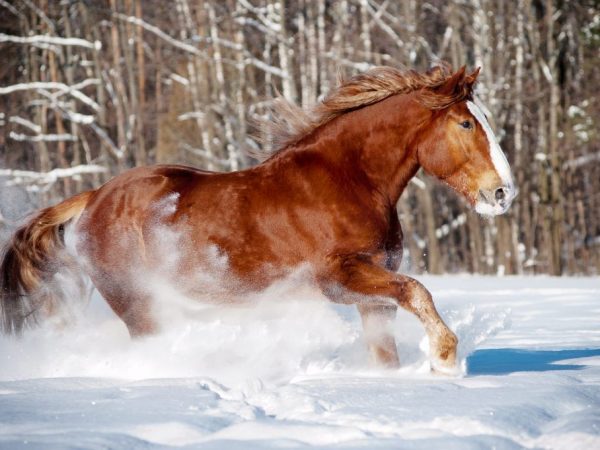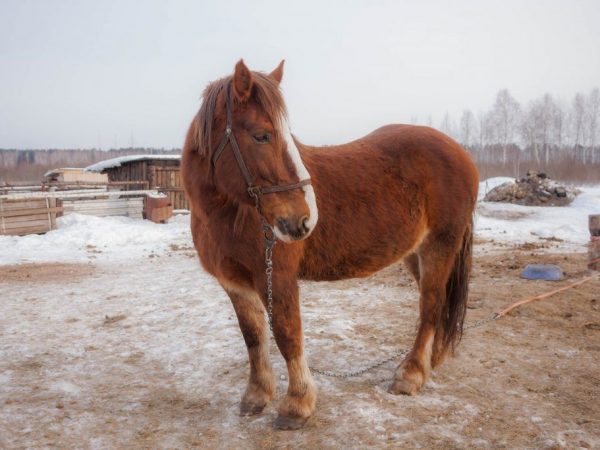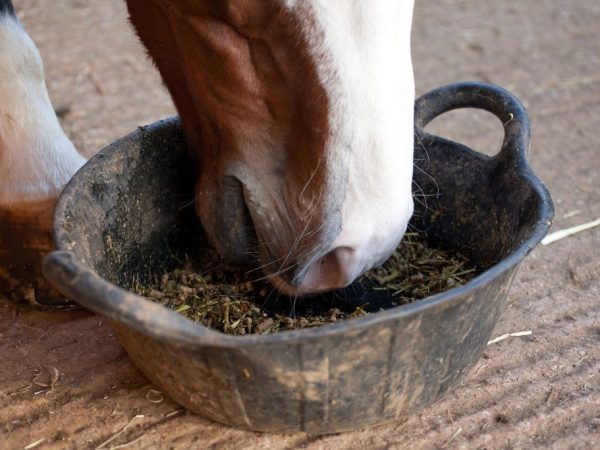Description of horses of the breed Russian Heavy Truck
Horses are divided into several categories, among which the Russian Heavy Truck breed stands out. It got its name from the type of activity, content and purpose in agriculture.

Horse breed Russian Heavy Truck
History of creation
Breeders have created such a wonderful species of animals by crossing several breeds. The conclusion of this type was difficult, as it happened by crossing local representatives and horses of Belgian or French blood, which greatly complicated the whole process. For the first time, according to official data, veterinarians from the Ural Territories managed to create such a species, since the crossing took place with the participation of local animal breeds. Over the years, each breeder introduced his own changes, the DNA indicators were mixed, which was aimed at breeding an undemanding, but working species.
The horses of the Russian Heavy Truck breed were already recognized at that time as one of the best breeds in their field. After the revolution ended and stability came to replace, the study and breeding of Russian Heavy Trailers was taken up even more seriously. Already in the 1930s, this species was finally presented in Russia.
Although not all owners and farmers recognized the advantages of animals, due to the fact that they were too small in stature, which at that time was unusual for keeping and unacceptable. The experiments did not end there, and after 20 years the issue of growth was resolved.
The animals received the second name quite interesting and memorable: Russian Heavy Loaders are also called Ardens, which is reliably connected with the roots.
Description
Many connoisseurs admire the horses of the Russian Heavy Loader breed. Despite the efforts of professors and specialists, the growth of individuals remained within 145 cm. The animals stand out in that their dimensions are slightly smaller, although the horses themselves are much more productive than competitors.

Description of the breed Russian Heavy Truck
Although the stallion of the Russian Heavy Truck breed is used as a labor force, the animal still remains noble, and looks great at any time of the year.Such conclusions can be drawn if you look at the Russian Heavy Truck in winter, even the photo will give the correct idea. By the way, the weight of stallions on average reaches 650 kg, mares - up to 550. Among other animals, the described individuals stand out in that they have:
- Dry, but very beautiful legs.
- An elongated torso and a wide chest, which, with such dimensions, stands out very much.
- A large head and a wide forehead make the image stricter and more serious.
- The neck stands out well, is beautifully arched, broad and well defined in shape and muscle. Large and pretty withers.
- The tail and the entire hairline often have a special shine and thickness.
Basically, the color of the horse is red, dark individuals are quite rare, but they are no exception. The Russian draft horse fascinates with its appearance and demeanor, which is not typical for an ordinary horse.
Character
The main advantage and positive quality of horses is their cheerful and energetic behavior.All owners characterize them as good helpers and loyal companions in any work.
Hardy and unpretentious livestock is every farmer's dream. Efficiency and fertility are also their irrefutable positive qualities. Indeed, the Russian heavy trucks have more than enough strength and energy.
Care
Even the most undemanding species cannot do their job 100% efficiently if not cared for properly. The Russian Draft Truck is designed for complex field work, therefore, the preparation of the ration is of great importance for the horse's performance. Taking into account the fact that the horses weigh a little, their feeding will not take extra time, effort and material costs.
In order not to overdo it with dry food and hay, it is worth calculating and taking into account all the individual characteristics of each individual. Is keeping a horse a responsible business? after all, it is a pleasure to observe the growth and life of a horse, growing up, nutrition, behavior and character traits.

Caring for a horse of the Russian Heavy Truck breed
During the season, an adult should receive:
- about 7-8 kg of concentrated feed per livestock unit;
- 12 kg of hay per day;
- 6 kg of oats and beans;
- several kg of fresh carrots.
In the summer, a representative of the described variety should receive about 30 kg of fresh grass. The amount of fresh feed calculated for the working season will depend on how much the animal weighs. The content of such food should be varied, rich in vitamins, cereals and nutrients.
In the stall, in accordance with the standards, sanitary conditions must be created and rooms for keeping are equipped. In the case of mares, the amount of food can be slightly reduced; carrots can be replaced with sprouted cereals. In addition, you need to carefully monitor your health, teeth, hooves and coat cleanliness. If you brush your mane regularly or do a haircut, the thick hair will not become a burden for the horse. It is imperative to check with veterinarians.
Application area
If we talk about breeding such a breed in the modern world, then it is widely used only in agriculture, where the main purpose will be labor and endurance.
If we take into account all the capabilities of this animal, then some analysts argue that its strength is equal to that of the T-40 tractor. The maximum weight that can be moved is the threshold of 14.5 tons. Due to the rise in fuel prices, this option is just an excellent alternative for economical and resourceful entrepreneurs and farmers.
Interesting facts and stories
All over the world, you can find more than 20 varieties and varieties of similar end. In the cartoon about Russian heroes, a prototype of such a stallion, a strong and enduring reliable companion, was used.
Draft trucks have a strong body and muscular legs, but they cannot run fast, as they are very clumsy. Even taking into account all of the above aspects, they easily overcome obstacles: they jump, slip, go around everything that stands in the way. Unlike other riding horses, they have a strong nervous system and do not react reflexively, as sports animals do, to noises and sharp popping.
Today, unfortunately, purebred representatives of this species are on the verge of extinction, as more and more they mix with other similar families, and it is very difficult to keep them in proper conditions.


